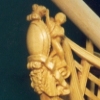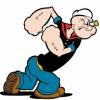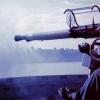-
Posts
6,365 -
Joined
-
Last visited
Reputation Activity
-
 wefalck got a reaction from druxey in Tools, tools and more tools....
wefalck got a reaction from druxey in Tools, tools and more tools....
Yes, got a couple of those Barraquer needle holders somehow secondhand for a fraction of the price in the ebay-offers. Mine, unfortunately are not lockable, but one can improvise a lock by sliding an oval ring over them.
One has to keep an eye open for those chirurgical and particularly ophtalimic surgery instruments. Have also micro-scissors of different sizes from that realm and they come to good use in rigging.
-
 wefalck got a reaction from EdT in HMCSS Victoria 1855 by BANYAN - 1:72
wefalck got a reaction from EdT in HMCSS Victoria 1855 by BANYAN - 1:72
For put squares (or hexagons) onto the end of round material, there is the classical solution watchmakers use (for the watch winding stems), the 'double roller filing rest'. Here is a picture from the Internet (as I didn't have a picture of mine to hand):
Source: http://www.myford-lathes.com/
The above is shop-made, but in the old days watchmakers lathes came with them. You also need a way to index the headstock of the lathe (an indexing plate was integrated into the pulley of watchmakers lathes).
A more artisanl way is to find a pin-vise with a square nut, hold the nut down onto the work-table and try to hold the file as horizontal as you can while filing. It is a good idea to use a file with a 'safe-edge' for this, i.e. a file that does not have teeth on the narrow side. I have done dozens of square and hexagonal (with a hexagonal nutted pin-vice) like this, before I had a lathe.
-
 wefalck got a reaction from popeye the sailor in Bristol Pilot Cutter by michael mott - 1/8 scale - POF
wefalck got a reaction from popeye the sailor in Bristol Pilot Cutter by michael mott - 1/8 scale - POF
I love this metal-work, looks like the real cast thing !
One thing that occurred to me: the open end of the shackles looks a bit wide, which results in the shackled being pulled in an oblique direction to the bolt; in real life this could result in the bolt being bent, so that one cannot unshackle it anymore ...
-
 wefalck got a reaction from popeye the sailor in HMCSS Victoria 1855 by BANYAN - 1:72
wefalck got a reaction from popeye the sailor in HMCSS Victoria 1855 by BANYAN - 1:72
For put squares (or hexagons) onto the end of round material, there is the classical solution watchmakers use (for the watch winding stems), the 'double roller filing rest'. Here is a picture from the Internet (as I didn't have a picture of mine to hand):
Source: http://www.myford-lathes.com/
The above is shop-made, but in the old days watchmakers lathes came with them. You also need a way to index the headstock of the lathe (an indexing plate was integrated into the pulley of watchmakers lathes).
A more artisanl way is to find a pin-vise with a square nut, hold the nut down onto the work-table and try to hold the file as horizontal as you can while filing. It is a good idea to use a file with a 'safe-edge' for this, i.e. a file that does not have teeth on the narrow side. I have done dozens of square and hexagonal (with a hexagonal nutted pin-vice) like this, before I had a lathe.
-
 wefalck reacted to michael mott in Bristol Pilot Cutter by michael mott - 1/8 scale - POF
wefalck reacted to michael mott in Bristol Pilot Cutter by michael mott - 1/8 scale - POF
A little more work on the topmast rigging.
First I did an eye splice then served it.
It was a bit tight slipping the eye over the sheave at the top but with a bit of fiddling it all worked out a little easier when I lowered it after my arms started to ache.
I need to push the cap back down.
I also put the jib Forestay up and realized that it will need to be set up differently because it will attach to the bowsprit traveler that can be positioned along the bowsprit. The steel part will need to be shortened as it is too long because the halliard for the forestay is at the limit and there is no room to adjust it as the length is shortened moving toward the bow.
It is beginning to get busy up there.
A shot at the cranse iron at the tip of the bowsprit. presently there is a double block with a becket but it need to be changed to a single block with a becket, The one I have is too small. the topmast forestay is set through a single block and will cleat off at the bow somewhere. It is belayed to the post next the the bowsprit at the moment while I determine where to cleat it.
Michael
-
 wefalck got a reaction from druxey in CoolTool Unimat Powerline - Next generation Unimat?
wefalck got a reaction from druxey in CoolTool Unimat Powerline - Next generation Unimat?
Though a tempting idea, you will find sooner or later that combination machines are a pain, at least for those who regularly use the machines. Often one has to perform turning and milling operations on the same part, which means that you have to break down one set up for the sake of another. With time you will get fed up by this, because you not only have to reconfigure the machine, but also to adjust it etc.
Such machines are good for emergency repairs or such, say on a ship, where you wouldn't need a full-blown workshop.
-
 wefalck got a reaction from Canute in Need ideas for 1/250 scale davit tackles
wefalck got a reaction from Canute in Need ideas for 1/250 scale davit tackles
I am making 'ropes' on my ropewalk from fly-tying thread. The the finest (16/0) gives a rope of about 0.04 mm diameter. This thread is available in many different colours, e.g. silvery grey for steel-wire, black, and beige.
Check out the building-log for my Zuiderzee-Botter, where I used these ropes. They can be stiffened with clear varnish - better than using glue, because the varnish can be softened with the appropriate solvent (not acrylic varnish !). The rope coils etc. on the botter-model are shaped with varnish.
Such rope would be an alternative to the twisted wire in the method described above.
-
 wefalck got a reaction from Canute in Need ideas for 1/250 scale davit tackles
wefalck got a reaction from Canute in Need ideas for 1/250 scale davit tackles
It is dead easy and quite cheap to find copper wire down to 0.05 mm and molybdenum wire down to 0.03 mm diameter on ebay - bought recently a whole batch from various Chines sources. They often deliver within a few days, at least here in Europe.
wires.co.uk also sells pre-tinned copper wire that might come handy here. Not as cheap as simple copper wire.
-
 wefalck got a reaction from Canute in Need ideas for 1/250 scale davit tackles
wefalck got a reaction from Canute in Need ideas for 1/250 scale davit tackles
To elaborate a bit:
- take copper or molybdenum (easy to find on ebay and stiffer than copper) wires of appropriate diameter and twist to lengths together, this is your (wire) rope; drill two holes of the distance of the blocks into a waste piece of wood and insert two pins of the diameter of your blocks; wind the wire rope you made around them to simulate the tackle - one end will begin at the lower block and the other end will run across the rollers on the davit; take the wire off the jig and stick paper roundels at the appropriate place to simulate the blocks; for double blocks you would actually need three roundels each; the top block will also need a short piece of wire or a loop attached to the davit; you can now attach the whole assembly to the davit.
-
 wefalck got a reaction from mtaylor in CoolTool Unimat Powerline - Next generation Unimat?
wefalck got a reaction from mtaylor in CoolTool Unimat Powerline - Next generation Unimat?
Though a tempting idea, you will find sooner or later that combination machines are a pain, at least for those who regularly use the machines. Often one has to perform turning and milling operations on the same part, which means that you have to break down one set up for the sake of another. With time you will get fed up by this, because you not only have to reconfigure the machine, but also to adjust it etc.
Such machines are good for emergency repairs or such, say on a ship, where you wouldn't need a full-blown workshop.
-
 wefalck got a reaction from mtaylor in Need ideas for 1/250 scale davit tackles
wefalck got a reaction from mtaylor in Need ideas for 1/250 scale davit tackles
I am making 'ropes' on my ropewalk from fly-tying thread. The the finest (16/0) gives a rope of about 0.04 mm diameter. This thread is available in many different colours, e.g. silvery grey for steel-wire, black, and beige.
Check out the building-log for my Zuiderzee-Botter, where I used these ropes. They can be stiffened with clear varnish - better than using glue, because the varnish can be softened with the appropriate solvent (not acrylic varnish !). The rope coils etc. on the botter-model are shaped with varnish.
Such rope would be an alternative to the twisted wire in the method described above.
-
 wefalck got a reaction from mtaylor in Need ideas for 1/250 scale davit tackles
wefalck got a reaction from mtaylor in Need ideas for 1/250 scale davit tackles
It is dead easy and quite cheap to find copper wire down to 0.05 mm and molybdenum wire down to 0.03 mm diameter on ebay - bought recently a whole batch from various Chines sources. They often deliver within a few days, at least here in Europe.
wires.co.uk also sells pre-tinned copper wire that might come handy here. Not as cheap as simple copper wire.
-
 wefalck got a reaction from mtaylor in Need ideas for 1/250 scale davit tackles
wefalck got a reaction from mtaylor in Need ideas for 1/250 scale davit tackles
To elaborate a bit:
- take copper or molybdenum (easy to find on ebay and stiffer than copper) wires of appropriate diameter and twist to lengths together, this is your (wire) rope; drill two holes of the distance of the blocks into a waste piece of wood and insert two pins of the diameter of your blocks; wind the wire rope you made around them to simulate the tackle - one end will begin at the lower block and the other end will run across the rollers on the davit; take the wire off the jig and stick paper roundels at the appropriate place to simulate the blocks; for double blocks you would actually need three roundels each; the top block will also need a short piece of wire or a loop attached to the davit; you can now attach the whole assembly to the davit.
-
 wefalck got a reaction from mtaylor in Need ideas for 1/250 scale davit tackles
wefalck got a reaction from mtaylor in Need ideas for 1/250 scale davit tackles
Do you have a copy of Lloyd McCaffery's book 'Shipbuilding in Miniature' ? He describes, together with a picture, how he constructs such tackles from twisted wire. The rope made from wire is shaped around a rig and paper discs representing blocks are glued to the sides. The whole thing than forms a more or less rigid assembly that is installed at the desired place.
-
 wefalck got a reaction from ccoyle in Need ideas for 1/250 scale davit tackles
wefalck got a reaction from ccoyle in Need ideas for 1/250 scale davit tackles
I am making 'ropes' on my ropewalk from fly-tying thread. The the finest (16/0) gives a rope of about 0.04 mm diameter. This thread is available in many different colours, e.g. silvery grey for steel-wire, black, and beige.
Check out the building-log for my Zuiderzee-Botter, where I used these ropes. They can be stiffened with clear varnish - better than using glue, because the varnish can be softened with the appropriate solvent (not acrylic varnish !). The rope coils etc. on the botter-model are shaped with varnish.
Such rope would be an alternative to the twisted wire in the method described above.
-
 wefalck got a reaction from Canute in CoolTool Unimat Powerline - Next generation Unimat?
wefalck got a reaction from Canute in CoolTool Unimat Powerline - Next generation Unimat?
Though a tempting idea, you will find sooner or later that combination machines are a pain, at least for those who regularly use the machines. Often one has to perform turning and milling operations on the same part, which means that you have to break down one set up for the sake of another. With time you will get fed up by this, because you not only have to reconfigure the machine, but also to adjust it etc.
Such machines are good for emergency repairs or such, say on a ship, where you wouldn't need a full-blown workshop.
-
 wefalck got a reaction from ccoyle in Need ideas for 1/250 scale davit tackles
wefalck got a reaction from ccoyle in Need ideas for 1/250 scale davit tackles
To elaborate a bit:
- take copper or molybdenum (easy to find on ebay and stiffer than copper) wires of appropriate diameter and twist to lengths together, this is your (wire) rope; drill two holes of the distance of the blocks into a waste piece of wood and insert two pins of the diameter of your blocks; wind the wire rope you made around them to simulate the tackle - one end will begin at the lower block and the other end will run across the rollers on the davit; take the wire off the jig and stick paper roundels at the appropriate place to simulate the blocks; for double blocks you would actually need three roundels each; the top block will also need a short piece of wire or a loop attached to the davit; you can now attach the whole assembly to the davit.
-
 wefalck got a reaction from jud in Falls of Clyde 1878 by GAW - FINISHED - scale 1:96 - iron 40-frame hull center cross-section
wefalck got a reaction from jud in Falls of Clyde 1878 by GAW - FINISHED - scale 1:96 - iron 40-frame hull center cross-section
Interesting design and mechanically quite complex for something installed on the deck of a ship. The design seems to be somehow inspired by the steam-pump design for fire-engines, which had to be very compact. The cross-head there slides in frame perpendicular to the piston rod. I wondering whether the elaborate cams drive two-stage pumps: suction pumps become very ineffective say above 7 m or so; by dividing the height over which the water is to be lifted into two stages, you can achieve greater lifting heights. The cams would help timing the movements of the pistons. Just some wild ideas ...
-
 wefalck reacted to Javier Baron in Ligurian Tartane by Javier Baron - FINISHED - scale 1:200
wefalck reacted to Javier Baron in Ligurian Tartane by Javier Baron - FINISHED - scale 1:200
Thanks for your comments. Part of the interior of the ship can be seen, since I will leave the cargo hatches open and the door of the cabin half-open. In addition, one of the reasons why I build part of the interior carpentry is to give the hull greater rigidity. In the system that I use, the most delicate moment is just when the false bulkheads are pulled, since the hull only has 0.6 mm walls in its raw state, that is, before sanding.
-
 wefalck got a reaction from ccoyle in Need ideas for 1/250 scale davit tackles
wefalck got a reaction from ccoyle in Need ideas for 1/250 scale davit tackles
Do you have a copy of Lloyd McCaffery's book 'Shipbuilding in Miniature' ? He describes, together with a picture, how he constructs such tackles from twisted wire. The rope made from wire is shaped around a rig and paper discs representing blocks are glued to the sides. The whole thing than forms a more or less rigid assembly that is installed at the desired place.
-
 wefalck got a reaction from druxey in Falls of Clyde 1878 by GAW - FINISHED - scale 1:96 - iron 40-frame hull center cross-section
wefalck got a reaction from druxey in Falls of Clyde 1878 by GAW - FINISHED - scale 1:96 - iron 40-frame hull center cross-section
Interesting design and mechanically quite complex for something installed on the deck of a ship. The design seems to be somehow inspired by the steam-pump design for fire-engines, which had to be very compact. The cross-head there slides in frame perpendicular to the piston rod. I wondering whether the elaborate cams drive two-stage pumps: suction pumps become very ineffective say above 7 m or so; by dividing the height over which the water is to be lifted into two stages, you can achieve greater lifting heights. The cams would help timing the movements of the pistons. Just some wild ideas ...
-
 wefalck got a reaction from popeye the sailor in Varyag 1901 by Valeriy V - FINISHED - scale 1:75 - Russian Cruiser
wefalck got a reaction from popeye the sailor in Varyag 1901 by Valeriy V - FINISHED - scale 1:75 - Russian Cruiser
Thanks, that confirmed my assumptions.
-
 wefalck got a reaction from Canute in Varyag 1901 by Valeriy V - FINISHED - scale 1:75 - Russian Cruiser
wefalck got a reaction from Canute in Varyag 1901 by Valeriy V - FINISHED - scale 1:75 - Russian Cruiser
That would make it even worse, the two stream systems would mix in a chaotic way ...
-
 wefalck got a reaction from Canute in Varyag 1901 by Valeriy V - FINISHED - scale 1:75 - Russian Cruiser
wefalck got a reaction from Canute in Varyag 1901 by Valeriy V - FINISHED - scale 1:75 - Russian Cruiser
I am not commenting on the workmanship, it speaks for itself ...
However, something looks odd to me - I am sure it is according to the plans, namely that there is a screw-well in front of the rudder, while this seems to be twin-screwed vessel. Such a screw-well would cause a lot of turbulences and cross-flows in front the rudder. Is there any rationale, why this was designed that way ? One explanation, I could think of myself is that improves the turning capability - for the same reason tugs had cut large openings cut into the 'dead-wood' in front of the screw. Any thoughts on this ?
-
 wefalck got a reaction from Canute in Need ideas for 1/250 scale davit tackles
wefalck got a reaction from Canute in Need ideas for 1/250 scale davit tackles
Do you have a copy of Lloyd McCaffery's book 'Shipbuilding in Miniature' ? He describes, together with a picture, how he constructs such tackles from twisted wire. The rope made from wire is shaped around a rig and paper discs representing blocks are glued to the sides. The whole thing than forms a more or less rigid assembly that is installed at the desired place.









